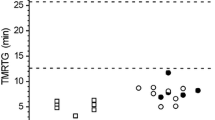Abstract
Sickle cell disease (SCD) is a hemoglobinopathy characterized by hemolysis, oxidative stress, and vaso-occlusive crises. Thromboembolism also remains a serious complication and probably underestimated in the SCD. Our objective was to seek the existence of hemostasis abnormalities that predispose to thrombosis such as elevation of FVIII and Physiological inhibitors of coagulation deficiency. We studied 81 patients with SCD, including 32 homozygous S/S, 20 double heterozygous S/β thalassemia and 29 heterozygous S/A. Controls AA were in number 60. For each patient and control we assayed the physiological coagulation inhibitors (Protein C, Protein S and Antithrombin) and the clotting FVIII. We found a significant increase in FVIII in all phenotypes of SCD compared to controls. Also, a significant decrease in levels of protein C and S was observed in patients with sickle cell homozygous or double heterozygous S β Thalassemia compared to controls. As against, for antithrombin no difference was observed between patients and controls. These hemostasis abnormalities therefore reflect the existence of a pro thrombotic state in sickle cell disease that can explain the increase of incidence of thrombosis in this pathology. Factor VIII clotting consistently high in SCD may well be a prime therapeutic target in the treatment of thrombotic manifestations of this disease.
Similar content being viewed by others
References
Wajcman H, Lantz B, Girot R (1992) Les maladies du globule rouge. Les éditions INSERM Médecine-Sciences Flammarion, Paris
Embury SH, Hebbel RP, Mohandas N, Steinberg MH (1994) Sickle cell disease. In: Basic principles and clinical practice. Raven Press, New York, pp 311–326
Francis RB, Johnson CS (1991) Vascular occlusion in sickle cell disease: current concepts and unanswered questions. Blood 77:1405–1414
Naik RB (2013) Venous thromboembolism in adults with sickle cell disease, a serious and under recognized complication. An/Med 126:443–449
Abad MT (2009) Les syndromes drépanocytaires en algérie: épidémiologie nationale 1996–2005. Revue algérienne d’hématologie 1:29–31
Koster T, Blann AD, Briet E, Vandenbrouke JP, Rosendaal FR (1995) Role of clotting factor VIII in effect of von Willebrand factor on occurrence of deep-vem thrombosis. Lancet 345:152–155
Rosendaal FR (1997) Risk factors for venous thrombosis prevalence, risk and interaction. Semin Hematol 34:171–187
Lane DA, Mannucci PM, Bauer KA et al (1996) Inherited thrombophila Part l. Thromb Haemost 76:651–662
Rosendaal FR (1999) Venous thrombosis: a multicausal disease. Lancet 353:1167–1173
Pakbaz Z, Wun T (2014) Role of the hemostatic system on SCD pathophysiology and potential therapeutics. Hematol Oncol Clin North Am 28(2):355–374
Solovey A, Kollander R, Shet A et al (2004) Endothelial cell expression of tissue factor in sickle mice is augmented by hypoxia/reoxygenation and inhibited by lovastatin. Blood 104(3):840–846
Setty BN, Kulkani S, Stuart MJ (2002) Role of erythrocyte phosphatidylserine in sickle red cell-endothelial adhesion. Blood 99:1564–1571
Shet AS, Aras O, Gupta K et al (2003) Sickle blood contains tissue factor-positive microparticles derived from endothelial cells and monocytes. Blood 102:2678–2683
de Montalembert M (2002) Traitement de la drépanocytose par l’hydroxyurée. Hematologie 8:28–34
Ware RE, Aygun B (2009) Advances in the use of hydroxyurea. Hematol Am Soc Hematol 1:62–69
Koc A, Gumruk F, Gurgey A (2003) The effect of hydroxyurea on the coagulation system in sickle cell anemia and beta-thalassemia intermedia patients: a preliminary study. Pediatr Hematol Oncol 20(6):429–434
Author information
Authors and Affiliations
Corresponding author
Rights and permissions
About this article
Cite this article
Chekkal, M., Rahal, M.C.A., Moulasserdoun, K. et al. Increased Level of Factor VIII and Physiological Inhibitors of Coagulation in Patients with Sickle Cell Disease. Indian J Hematol Blood Transfus 33, 235–238 (2017). https://doi.org/10.1007/s12288-016-0701-z
Received:
Accepted:
Published:
Issue Date:
DOI: https://doi.org/10.1007/s12288-016-0701-z




